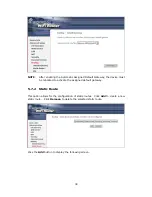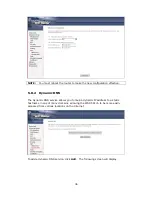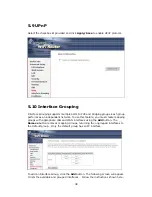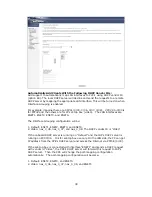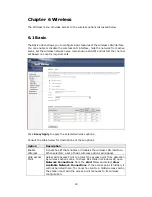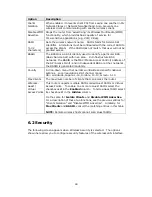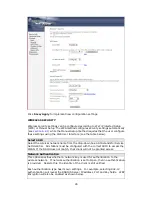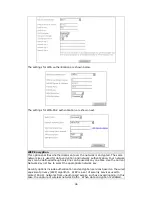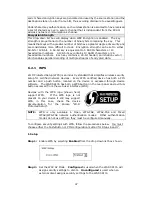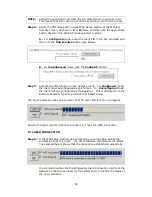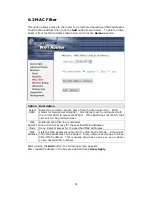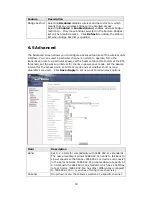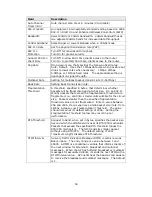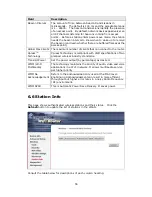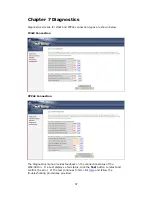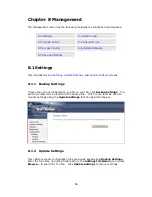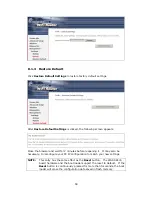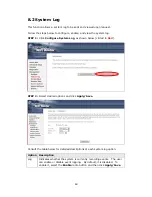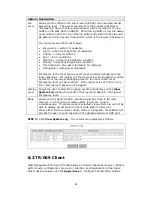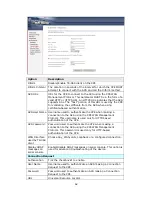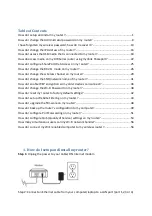
47
secret shared encryption keys are generated and used by the source station and the
destination station to alter frame bits, thus avoiding disclosure to eavesdroppers.
Under shared key authentication, each wireless station is assumed to have received
a secret shared key over a secure channel that is independent from the 802.11
wireless network communications channel.
Encryption Strength
This drop-down list box will display when WEP Encryption is enabled. The key
strength is proportional to the number of binary bits comprising the key. This
means that keys with a greater number of bits have a greater degree of security and
are considerably more difficult to crack. Encryption strength can be set to either
64-bit or 128-bit. A 64-bit key is equivalent to 5 ASCII characters or 10
hexadecimal numbers. A 128-bit key contains 13 ASCII characters or 26
hexadecimal numbers. Each key contains a 24-bit header (an initiation vector)
which enables parallel decoding of multiple streams of encrypted data.
6.2.1
WPS
Wi-Fi Protected Setup (WPS) is an industry standard that simplifies wireless security
setup for certified network devices. Every WPS certified device has both a PIN
number and a push button, located on the device or accessed through device
software. The WAP-5813n has both a WPS button on the rear panel and a virtual
button accessed from the web user interface (WUI).
Devices with the WPS logo (shown here)
support WPS. If the WPS logo is not
present on your device it still may support
WPS, in this case, check the device
documentation for the phrase “Wi-Fi
Protected Setup”.
NOTE:
WPS is only available in Open, WPA-PSK, WPA2-PSK and Mixed
WPA2/WPA-PSK network authentication modes. Other authentication
modes do not use WPS so they must be configured manually.
To configure security settings with WPS, follow the procedures below. You must
choose either the Push-Button or PIN configuration method for Steps 6 and 7.
I. Setup
Step 1:
Enable WPS by selecting
Enabled
from the drop down list box shown.
Step 2:
Set the WSC AP Mode.
Configured
is used when the WAP-5813n will
assign security settings to clients.
Unconfigured
is used when an
external client assigns security settings to the WAP-5813n.


